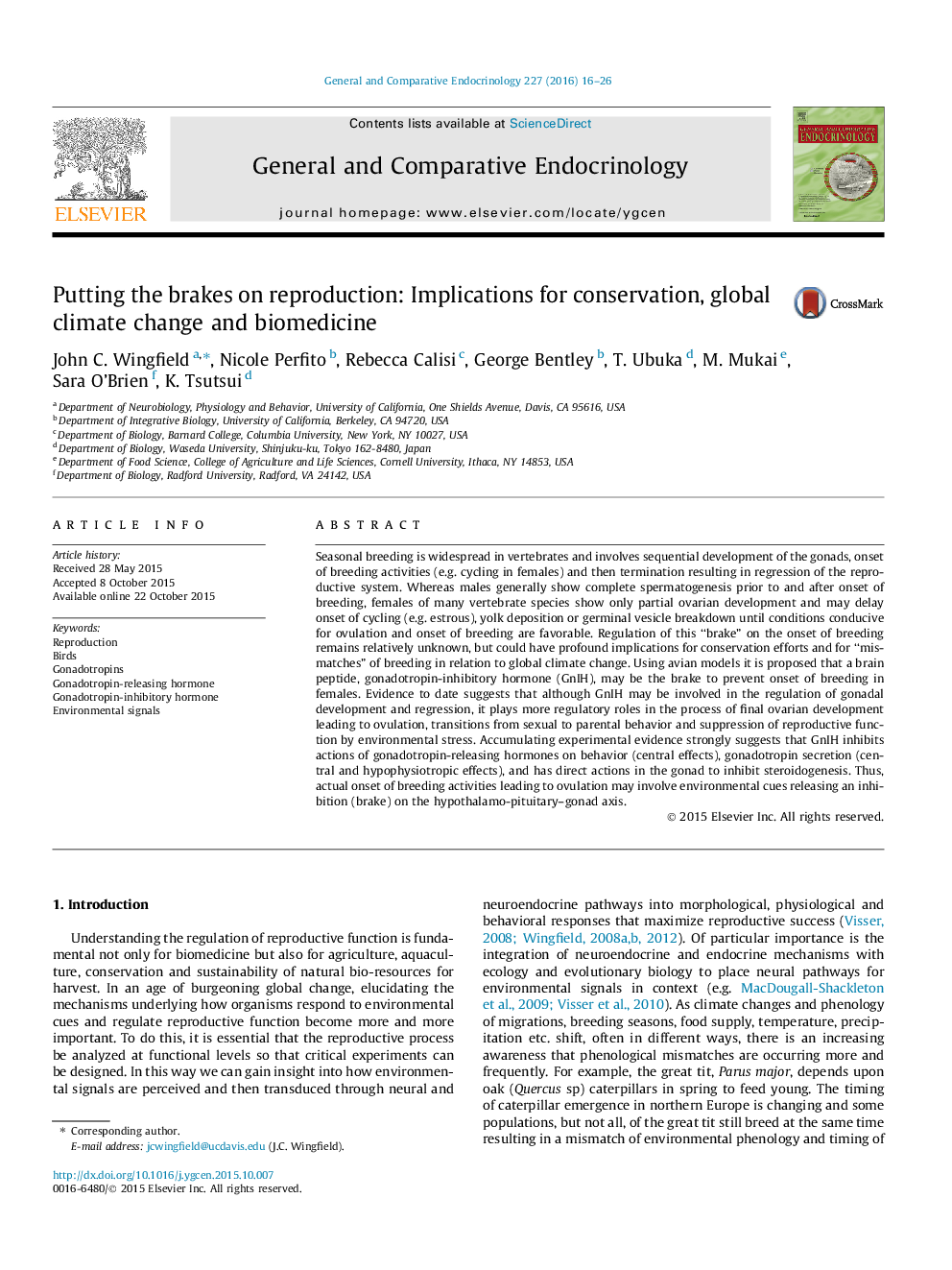| کد مقاله | کد نشریه | سال انتشار | مقاله انگلیسی | نسخه تمام متن |
|---|---|---|---|---|
| 2799854 | 1568879 | 2016 | 11 صفحه PDF | دانلود رایگان |
• Global climate change is shifting breeding times.
• Some species are less flexible than others and a mismatch of nest time and environment occurs.
• There is a “brake” on onset of nesting until appropriate conditions develop.
• Gonadotropin-inhibitory hormone is proposed as the neuroendocrine brake.
• GnIH may also act at the level of the gonads providing direct regulation of nesting.
Seasonal breeding is widespread in vertebrates and involves sequential development of the gonads, onset of breeding activities (e.g. cycling in females) and then termination resulting in regression of the reproductive system. Whereas males generally show complete spermatogenesis prior to and after onset of breeding, females of many vertebrate species show only partial ovarian development and may delay onset of cycling (e.g. estrous), yolk deposition or germinal vesicle breakdown until conditions conducive for ovulation and onset of breeding are favorable. Regulation of this “brake” on the onset of breeding remains relatively unknown, but could have profound implications for conservation efforts and for “mismatches” of breeding in relation to global climate change. Using avian models it is proposed that a brain peptide, gonadotropin-inhibitory hormone (GnIH), may be the brake to prevent onset of breeding in females. Evidence to date suggests that although GnIH may be involved in the regulation of gonadal development and regression, it plays more regulatory roles in the process of final ovarian development leading to ovulation, transitions from sexual to parental behavior and suppression of reproductive function by environmental stress. Accumulating experimental evidence strongly suggests that GnIH inhibits actions of gonadotropin-releasing hormones on behavior (central effects), gonadotropin secretion (central and hypophysiotropic effects), and has direct actions in the gonad to inhibit steroidogenesis. Thus, actual onset of breeding activities leading to ovulation may involve environmental cues releasing an inhibition (brake) on the hypothalamo-pituitary–gonad axis.
Journal: General and Comparative Endocrinology - Volume 227, 1 February 2016, Pages 16–26
